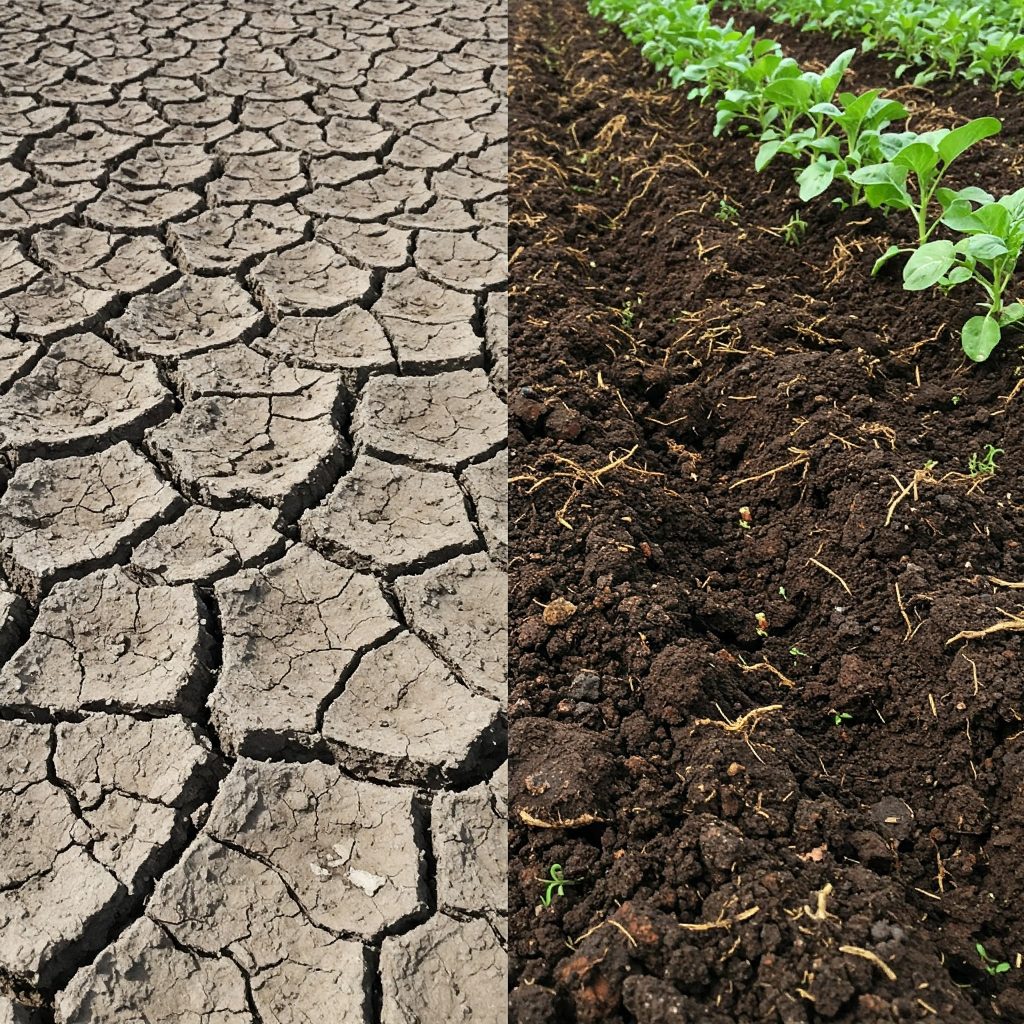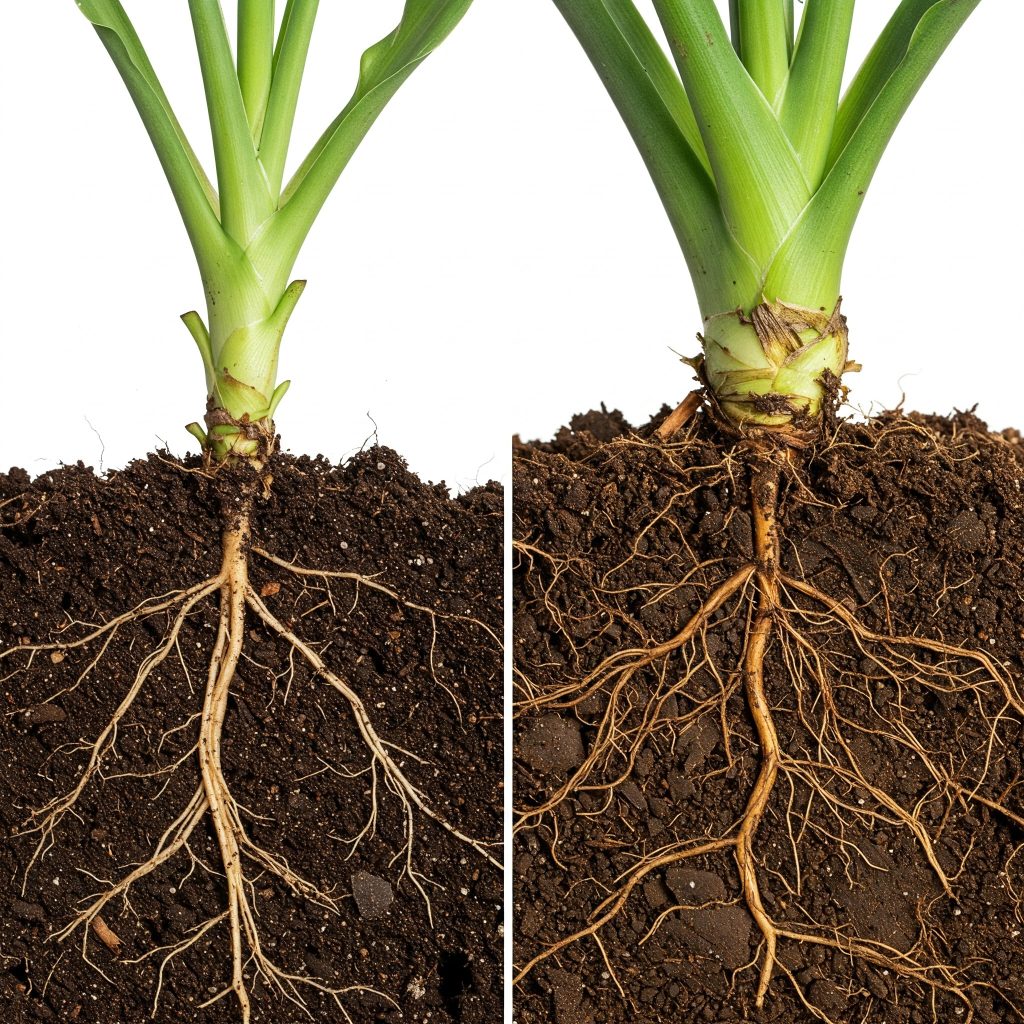Beyond Chemical Solutions: How Humic Acid is Transforming Sustainable Agriculture
In today’s agricultural landscape, chemical fertilizers are commonly employed to promote plant growth. Although they provide rapid results, their excessive application can cause long-term harm to soil health and the environment. To address this issue, many farmers are increasingly adopting humic acid, a natural alternative that improves soil fertility and fosters sustainable farming practices.
What is Humic Acid?
Humic acid is a natural compound that forms from the decomposition of organic matter, such as dead plants and leaves. It serves as a soil conditioner and biostimulant, in contrast to synthetic fertilizers, which merely supply nutrients. Humic acid enhances the overall structure and function of the soil, promoting long-term plant growth and health
- Chemical fertilizers offer an immediate energy boost to plants.
- Humic acid contributes to long-term soil health and stability.

The Problems Associated with Overusing Chemical Fertilizers
Chemical fertilizers are effective in the short term; however, excessive use can lead to significant problems
- Soil Acidification
- Salt Buildup
- Reduction in Beneficial Soil Microbes
- Poor soil structure and diminished fertility over time.
These issues can lead to weaker crops, reduced yields, and a greater reliance on additional input.
Key Benefits of Humic Acid
Humic acid enhances the physical, chemical, and biological properties of soil. Some of the key benefits include:
Improves Soil Structure: Loosens compacted soils, promotes root growth, and enhances the movement of air and water.
Increases Water Retention: Functions like a sponge, enabling soil to retain more moisture and decreasing the need for irrigation.
Enhances Nutrient Uptake: Binds nutrients, making them more accessible to plants.
Supports Microbial Activity: Promotes the growth of beneficial soil organisms that aid in nutrient cycling.
Buffers and Soil pH: Maintaining a Balanced Environment for Nutrient Availability.

Chelation: Unlocking Nutrients for Plants
One of the most important properties of humic acid is its ability to chelate micronutrients such as iron, zinc, and manganese. Chelation is the process of binding these nutrients in a form that plants can easily absorb. This process prevents nutrients from becoming locked in the soil and wasted, ensuring that crops receive the nourishment they require.
Using Humic Acid in a Balanced Farming Approach
Humic acid is not a complete substitute for fertilizers; rather, it acts as a potent supplement that diminishes the reliance on synthetic inputs. A balanced approach is essential.
Steps for Effective Integration of Humic Acid:
- Soil Testing: Understand Your Soil’s Nutrient Requirements.
- Start Gradually: Begin by decreasing the use of chemical fertilizers and incorporating humic acid into your routine.
- Combine Practices: Utilize in conjunction with crop rotation, cover cropping, and composting.
- Monitor and Adjust: Observe crop responses and soil changes to fine-tune applications.
The Long-Term Benefits of Humic Acid
Using humic acid not only promotes healthier plants but also supports more sustainable and cost-effective farming practices.
- Reduced Dependence on Synthetic Fertilizers
- Increased Crop Yields and Quaality
- Better Moisture Management
- Long-Term Soil Fertility
- Lowering Environmental Impact
Conclusion
Humic acid provides a practical and natural solution for farmers seeking to enhance soil health and minimize chemical inputs. By incorporating it into your regular soil management practices, you can cultivate stronger soil, produce healthier crops, and progress toward a more sustainable agricultural future.
Now is the time to take a step toward healthier soil and more resilient farming practices. Begin with humic acid and discover the significant difference it can make.